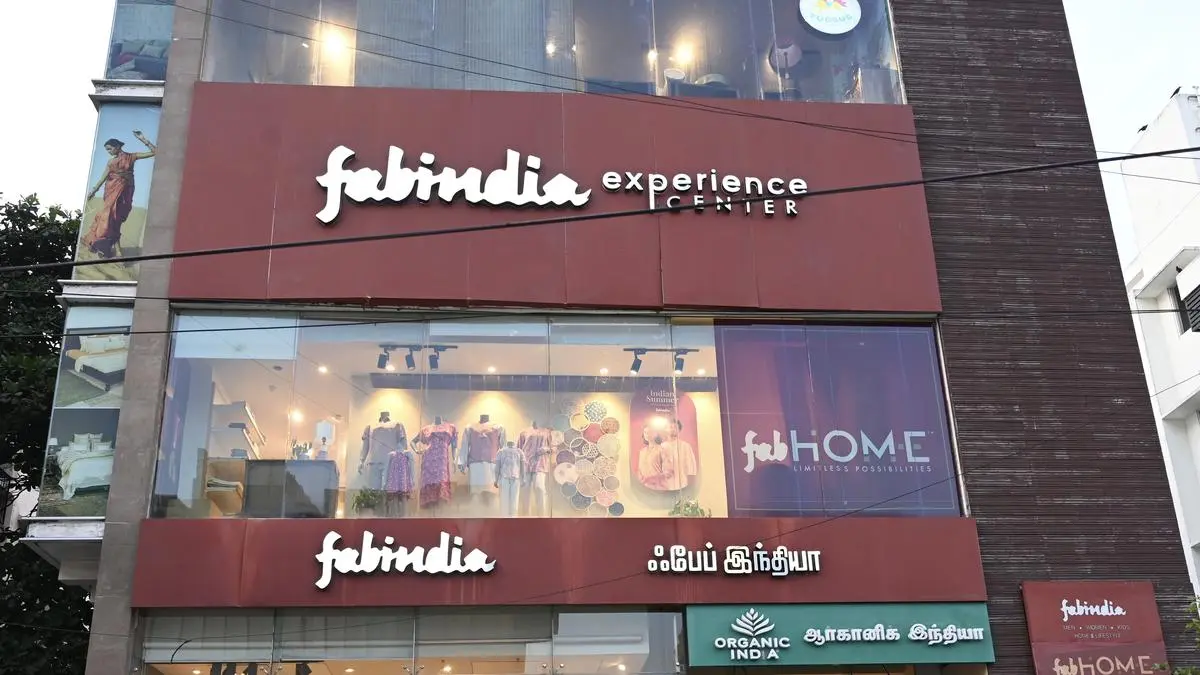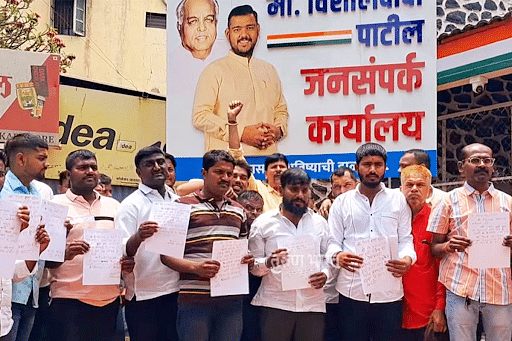- Arvind's Newsletter
- Posts
- Arvind's Newsletter -Weekend edition
Arvind's Newsletter -Weekend edition
Issue No #1095
1.Doha’s Hamad International airport tops Skytrax’s World’s best airport list
Only European and Asian airports made the top 10, with none in the India or US even breaking the top 20.
Hamad International Airport, the main airport for the city of Doha, is said to be about a third of the size of Qatar's capital city. It is spread over 600,000 square metre that is equal to 75 football fields. While Hamad International Airport secured the second rank last year behind Singapore’s Changi Airport, it was described as the most architecturally significant terminal complex in the world and also the most luxurious one at that.
In great news for Asia, Seoul Incheon Airport secured third place in the rankings. It was also named the most family-friendly airport of 2024. Tokyo's Haneda and Narita airports came in fourth and fifth place.
As for Indian airports in the list of world's best airports, just five made it to the top list, while just 1 was in the top 50 rank.
Delhi airport retained the 36th rank in the list, while Mumbai airport just managed to hold on to a place in the top 100 best airports list with its rank dropping to 95 from 84 last year.
Bengaluru airport jumped 10 ranks though in the top 100 best airports list, climbing to 59 from 69 last year. Hyderabad airport too climbed to 61th place from being the 65th best airpot in the world in 2023. Goa’s Manohar international airport came in at 92.
2.Psephologist Pradeep Gupta, known for successfully predicting past elections, said the BJP may struggle in 13 states including Rajasthan, which also goes to the polls on Friday.
Speaking to Moneycontrol, Gupta said the 13 states, including Maharashtra, Bihar, Madhya Pradesh, Karnataka, Gujarat, Rajasthan, Jharkhand, Chhattisgarh, Haryana, Delhi, Uttarakhand, Himachal Pradesh and Goa, and some Union Territories, have 257 Lok Sabha constituencies between them, and the NDA had won 238 seats in the 2019 general election.
“During the 2019 Lok Sabha polls, the NDA had a 93 percent strike rate in these states. However, considering the 2024 general election, the alliance in power has almost zero chances of getting more seats, and its tally may reduce. To reach 400, it will have to maintain at least its existing position,” said Gupta.
The psephologist reasoned that there has been a change in political dynamics in Maharashtra, Bihar, Karnataka and Delhi.
“Maharashtra has new alliances, and there has been a split in two major parties, the Shiv Sena and Nationalist Congress Party. The political equation has also changed compared to the last general election. Similarly, in Karnataka, the Congress party formed the government with a landslide victory and has the potential to win seats as well. In Delhi, the Congress and the Aam Aadmi Party have already stitched an alliance,” added Gupta.
3.Tatas in talks to buy stake in Fabindia’s apparel line
Tata Group is in talks with promoters and shareholders of Fabindia for a potential stake acquisition or outright purchase of the ethnic apparel business, the Hindu BusinessLine reported. Fabindia; the ethnic apparel retailer abandoned its IPO plans last year.
The ongoing talks suggest that the acquisition may value Fabindia at an amount lower than the $2.5 billion initially estimated during the clothing company's failed initial public offering (IPO), the report added.
4.Nepobabies control Maharashtra politics: Maharashtra Politics Is Caught In The ‘Sage-Soyre’ Trap, Neta Families Reluctant To Make Way For Political Greenhorns, reported Krishna Dange in Swarajya
One of the prominent words that has been in the vogue in the regional media since the onset of the Maratha agitation last year is 'sage-soyre,' which means those related by blood. While it was used by the community in the context of their demand for reservation, it perfectly epitomises the nature of dynastic hold over Maharashtra's polity.
As per the data compiled by the author from the results for each Lok Sabha constituency in Maharashtra and their constituting State Legislative Assembly seats, there are 75 families in the state that currently either have an MP (Member of Parliament, in Lok Sabha or Rajya Sabha) or an MLA (Member of Legislative Assembly) or an MLC (Member of Legislative Council) or individuals elected to all of the three positions amongst them.
Over the years, these politically influential families have successfully managed to convert the Lok Sabha as well as the state assembly constituencies in their spheres of influence into what is eerily reminiscent of the feudal ‘jagirs,’ either in parts or in whole.
For instance, octogenarian leader Sharad Pawar’s family, irrespective of the split in NCP, has members in almost all top law-making houses except the state council. While Pawar senior is currently a Rajya Sabha MP, his daughter Supriya Sule represents Baramati in Lok Sabha. On the other hand, Pawar senior’s nephew Ajit Pawar and grand-nephew Rohit Pawar are currently MLAs, representing Baramati and Karjat-Jamkhed respectively in the state assembly. Read on
5.A strike reportedly carried out by Israel hit an Iranian military base, ratcheting up fears of a widening of the Middle East conflict.
Israeli and Iranian officials attributed the attack early Friday morning in Isfahan to Israel, an apparent response to Tehran’s weekend aerial barrage that was itself retribution for the killing of a senior Iranian official in Damascus. World leaders again urged restraint by both countries, fearing the consequences of the metastasizing Israel-Hamas war, which has already resulted in attacks on economically vital Red Sea shipping lanes, brewing tensions along Israel’s border with Lebanon, and fears of growing radicalisation in the U.S. and Europe.
Analysts voiced optimism that the nature of the Israeli strike — a relatively narrow operation that ultimately caused limited damage, according to Iranian officials — would halt a much-feared cycle of escalation between the two countries: “It is quite clear this was not something that was meant to bring about durther escalation,” one Israeli researcher told The Wall Street Journal. Still, Iran-backed militias may yet target U.S. forces stationed in the region, an expert warned.
6.Made in Bihar: How superfood makhana works its magic
Foxnut seeds are touted as a healthy alternative for snacks like chips, and are sold the world over. But closer to home, we might recognise them as makhana. Once little known, makhana may well become the crown jewel of India’s $20 billion-plus snacking market. And Bihar, which accounts for nearly 90% of the world’s makhana production, holds that crown jewel. Read more.
7.Hyundai starts setting the stage for India’s biggest IPO
Hyundai, India’s No.2 car manufacturer, is gearing up for what could be the largest initial public offering (IPO) in the country, and plans to invite analysts to its manufacturing facility in Chennai in the coming weeks as part of its preparations.
According to people familiar with the matter, the carmaker plans to file a draft red herring prospectus for a $3-3.5 billion share sale by around June, aiming to complete the listing before Diwali.
8.There are reasons to be cheerful about Generation Z, reports the Economist
A vast cohort is coming of age. Globally, some 2bn people were born between 1997 and 2012, and so are part of “Generation Z”. In America and Britain this group makes up a fifth of the population, rivalling the share of baby-boomers; in India and Nigeria the young far outnumber the old. For each generation there is a simple narrative: that boomers were shaped by post-war plenty, for example, or millennials by the financial crisis of 2007-09. For Gen Z the popular view is that smartphones have made them miserable and they will live grimmer lives than their elders.
More and more people in the West tell pollsters that today’s children will be worse off than their parents. Youngsters themselves worry about everything from the difficulty of buying a home to the looming dangers from climate change. Social scientists fret that Gen Z-ers, having spent their formative years doomscrolling and suffering from fomo, are now gripped by an epidemic of anxiety and depression. Politicians in America and Britain are mulling banning smartphones and restricting social media for the under-16s; parents and schoolteachers everywhere are trying to police screen time.
All this can make it hard to feel optimistic about Gen Z. But when you look around the world, and at a wider set of measures, the Zoomers are far from doomed. In many respects, they are doing rather well.
For a start, the popular narrative makes an important omission: the roughly four-fifths of the world’s 12- to 27-year-olds who live in emerging economies. Thanks to growth and the spread of technology, youngsters in places like Jakarta, Mumbai or Nairobi are far better off than their parents were. They are richer, healthier and more educated; those who have smartphones are better informed and connected. Small wonder that, in a survey by the UN in 2021, the young in emerging economies were more optimistic than those in the rich world.
Yet in some places there is a fear that the rapid progress of recent decades might fail to repeat itself. That anxiety is evident in China. Thanks to economic uncertainty and an emphasis on quantity over quality in higher education, over a third of degree-holders there may be unemployed.
In the rich world the picture is rosier than people think. Those of Gen Z who are in work—and in America there are nearly as many of them in workplaces now as there are boomers—are doing nicely. Red-hot demand for workers helps, as does the fact that Gen Z-ers are wisely acquiring marketable skills. More of them are pursuing science, engineering and medical degrees; the humanities have fallen out of favour.
Wages for Gen Z are rising at a much faster pace than they are for older workers, and the youth-unemployment rate across the rich world is at its lowest in decades. In America the income of the average Zoomer, after adjusting for taxes and transfers, comfortably exceeds that of a millennial or a Gen X-er at the same age, in real terms. True, housing affordability has worsened since the 1980s. But, thanks to Gen Z-ers’ stronger wage growth, house prices as a multiple of earnings are roughly where they were for millennials a decade ago. And young people today are at least able to put more of their salaries into savings.
Already Gen Z-ers are transforming the world of work. They have bargaining power—and they know it. Many millennials came of age in the shadow of the global financial crisis; they felt so precarious that they were afraid to ask for pay rises. Gen Z seems to have fewer qualms about quitting for a better opportunity, or taking things slowly and enjoying life. Bosses, unused to being on the back foot, complain. But older workers will be quietly thankful if overall pay and perks go up.
Gen Z will shape society in other ways, too. Young people’s concern about climate change will, as they reach voting age, make states more likely to act. More broadly, Zoomers tell pollsters they want bigger government. They may change their minds when they have to pay more taxes—or they may not.
They are a serious bunch, less given to late nights, binge drinking and promiscuity than their elders were. There is a dark side to this. They socialise in person less, have less sex, and are more likely to say they are lonely.
Reported rates of anxiety and depression are rising in much of the West. Some of this probably reflects a greater willingness to open up about mental health. But other factors play a role.
The extent to which social media fuel mental distress among the young is furiously debated. In the West the rise in anxiety coincides with the adoption of social media. However, hard evidence of causation is limited, and most of it comes from studies of adults in the rich world.
What is clear is that Generation Z has been at the sharp end of a technological revolution. The speed with which smartphones and then social-media apps were adopted around the world left users, and young people in particular, scrambling to figure out how best to navigate them. Social media have brought benefits, such as entertainment and connectivity, but also costs. Some content may be harmful, and time spent scrolling could have been devoted to study or sleep.
Transformative technologies often have downsides. In the past, people have adapted: think of the seat belts and regulations that made cars less deadly. Encouragingly, there are signs that social-media habits are already shifting as users weigh the costs and the benefits. Instead of posting about themselves publicly, for example, many are retreating to private groups on messaging apps. So far, the evidence that would justify a blanket ban on smartphones for the young does not exist, though schools should be free to bar them from classrooms, and parents are right to restrict screen time.
It is only natural for the old to worry about the young. If that leads to better mental-health treatment, or fewer restrictions on building more homes, well and good. But celebrate Gen Z’s resourcefulness, and its successes, too. ■






